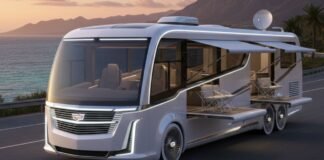- The Seltos Hybrid is part of Kia’s broader plan to electrify its entire lineup of SUVs and leisure vehicles sold in Korea.
- The hybrid model is expected to feature a 141-horsepower 1.6-liter hybrid system, similar to that in Hyundai’s Kona Hybrid and Kia’s Niro.
- Kia is developing a dedicated electronic all-time four-wheel drive (E-AWD) system for the Seltos Hybrid, aimed at the European market.
- With advanced hybrid technology, superior fuel efficiency, and enhanced driving performance, the Seltos Hybrid aims to attract a wide range of consumers.
Kia is gearing up to introduce a new generation Seltos hybrid model, according to a recent report from ETNews. Scheduled for release in the second half of next year, this highly anticipated model represents a significant step in Kia’s strategic commitment to expanding its hybrid offerings and addressing shifting market demands.
Introduction of the Seltos Hybrid
The forthcoming Seltos Hybrid is a crucial part of Kia’s broader plan to electrify its entire lineup of SUVs and leisure vehicles (RVs) sold in Korea. This initiative aims to counterbalance the temporary stagnation in electric vehicle demand while meeting the growing interest in hybrid cars. The hybrid model will be based on a completely overhauled Seltos, internally referred to as the SP3, with mass production set to commence in August 2025 at Kia Autoland Gwangju Factory.
First Hybrid System in the Seltos
For the first time, the Seltos will incorporate a hybrid system that pairs a gasoline engine with an electric motor. Since its initial release in 2019, the Seltos has been available in gasoline and diesel variants, but declining diesel demand has led to a recent focus solely on gasoline models. The introduction of the hybrid system is a significant enhancement, boosting both the vehicle’s performance and its appeal to environmentally conscious consumers.
Specifications and Performance
The new Seltos will come in two models: gasoline and hybrid. The hybrid variant is expected to feature a 141-horsepower 1.6-liter hybrid system, similar to the one used in Hyundai’s Kona Hybrid and Kia’s own Niro. This positioning suggests that the Seltos Hybrid could be a strong competitor to the Kona, though it raises questions about potential market overlap with the Niro, which is only slightly larger than the current Seltos.
Additionally, Kia is developing a dedicated electronic all-time four-wheel drive (E-AWD) system for the Seltos Hybrid. This system, tailored for the European market where there is a strong preference for four-wheel drive vehicles, promises superior driving performance and enhanced appeal in regions with diverse driving conditions.
Market Impact and Consumer Appeal
The introduction of the Seltos Hybrid is expected to significantly impact the small SUV market. Since its debut, the Seltos has been a favorite in Korea, consistently ranking as the top-selling domestic small SUV since 2020. Its success is largely due to its strong value proposition, offering an impressive ‘price-to-performance ratio’.
Priced from the early 20 million won range, the Hybrid model is poised to attract a diverse array of consumers, from eco-conscious buyers to those in search of a versatile and reliable small SUV. With its advanced hybrid technology, superior fuel efficiency, and enhanced driving performance, the Seltos Hybrid is set to reinforce Kia’s reputation for innovation and quality in the competitive automotive market.
Additional Insights
Kia’s move comes as part of a broader trend in the automotive industry, where manufacturers are increasingly focusing on hybrid and electric vehicles to meet stringent environmental regulations and shifting consumer preferences. The Seltos Hybrid’s expected fuel efficiency and lower emissions will likely make it a popular choice among urban drivers and those looking to reduce their carbon footprint without sacrificing performance.
Moreover, Kia’s investment in developing an E-AWD system highlights its commitment to innovation and addressing market-specific demands. This system is particularly relevant for European consumers, who often face challenging driving conditions and thus prefer vehicles with enhanced traction and stability.


